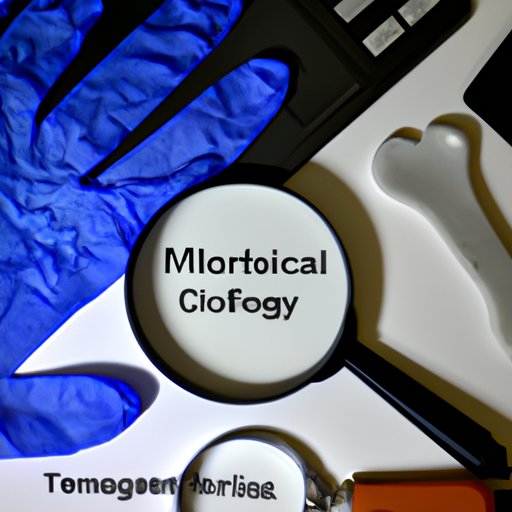Overview of Forensic Science
Forensic science is a scientific discipline that uses principles of science to investigate criminal activity and civil disputes. It involves the collection, analysis, interpretation and presentation of evidence in order to solve legal problems. The goal of forensic science is to help law enforcement and the judicial system understand the circumstances surrounding a crime or dispute.
The term “forensic” is derived from the Latin word forensis, which means “of or before the forum”. This refers to the fact that the evidence collected and studied by forensic scientists is often presented in court. While forensic science has been around for centuries, it has only recently gained widespread recognition.
Types of Evidence Used in Forensic Science
Forensic science relies on the use of various types of evidence to solve legal problems. These include physical, biological, chemical, and digital evidence. Physical evidence includes items such as fingerprints, footprints, hair, fibers, glass, and soil. Biological evidence includes DNA samples, blood, saliva, and other bodily fluids. Chemical evidence includes drugs, explosives, and poisons. Digital evidence includes data stored on computers, cell phones, and other electronic devices.
What Courses Should You Take to Study Forensic Science?
If you are interested in studying forensic science, there are several courses you should consider taking. At the introductory level, courses in anatomy, biology, chemistry, physics, mathematics, and computer science are recommended. For more advanced students, courses in toxicology, pathology, entomology, genetics, and forensic psychology may be beneficial.

The Role of Technology in Forensic Science
Technology plays an important role in modern forensic science. Computers and software are used to analyze evidence, compare fingerprints, and create three-dimensional crime scene reconstructions. Imaging technology such as X-rays, CT scans, and MRI scans can be used to examine evidence. Advanced technology such as DNA sequencing and mass spectrometry can also be used to analyze evidence.

The Role of Statistics in Forensic Science
Statistics play an important role in forensic science. Statistical analysis is used to interpret and analyze data collected from the crime scene. Probability theory is used to calculate the likelihood of certain outcomes based on the evidence. Statistics are also used to understand the causes of crime and to identify patterns in criminal behavior.
Career Paths in Forensic Science
Forensic science is an exciting and rewarding career path. Professionals in this field work in law enforcement, the private sector, and education. Law enforcement professionals use forensic science to investigate crimes. Private sector professionals use forensic science to solve civil disputes. Educators use forensic science to teach students about the science behind criminal investigations.

Ethical Considerations in Forensic Science
When studying forensic science, it is important to understand the ethical considerations involved. Privacy considerations must be taken into account when collecting and analyzing evidence. Confidentiality must be maintained to ensure that evidence is not revealed to unauthorized individuals. Accuracy must be ensured in order to prevent wrongful convictions. Finally, professional standards must be followed to ensure that evidence is handled correctly.
(Note: Is this article not meeting your expectations? Do you have knowledge or insights to share? Unlock new opportunities and expand your reach by joining our authors team. Click Registration to join us and share your expertise with our readers.)
